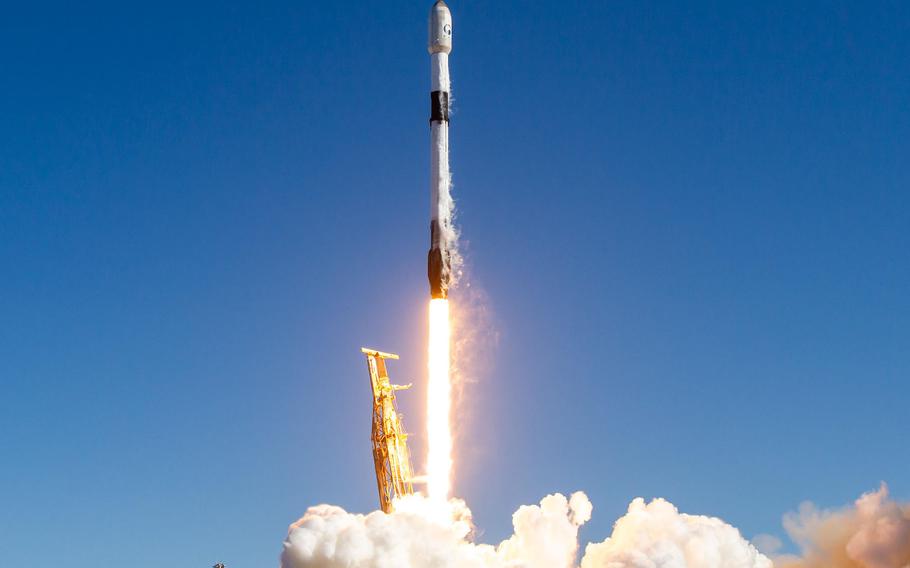
South Korea’s first military spy satellite takes off from Vandenberg Space Force Base, Calif., Dec. 1, 2023. (SpaceX)
CAMP HUMPHREYS, South Korea — Seoul is close to launching its second military reconnaissance satellite from the Cape Canaveral Space Force Station in Florida, according to South Korea’s military Tuesday.
The upcoming launch may come as soon as early April, pending favorable weather conditions, Ministry of National Defense spokesman Jeon Ha Gyu said at a news briefing.
The launch will be South Korea’s second after it successfully placed a satellite into orbit Dec. 1 aboard a SpaceX Falcon 9 rocket launched from Vandenberg Space Force Base, Calif.
That satellite is operating normally, and Seoul intends to place four more satellites into orbit by 2025 to better monitor North Korea, according to the South’s military.
North Korea intends to launch three satellites this year, the state-run Korean Central News Agency reported in December. Of the three attempts by the communist regime last year to place a satellite into orbit, only the last, on Nov. 21, succeeded.
South Korea questions the capability of the North’s lone surveillance satellite. South Korean Defense Minister Shin Won-sik during a news conference Feb. 26 said “there are no signs” the North’s orbiting Malligyong-1 satellite is capable of transmitting images back to Pyongyang.
The North’s satellite launches are one catalyst for deteriorated relations between Seoul and Pyongyang. South Korea has repeatedly warned the North that technology used in its satellite launches violated U.N. Security Council resolutions prohibiting Pyongyang from testing ballistic missiles since 2006.
After the Malligyong-1 launch in November the South announced it would resume aerial reconnaissance operations previously banned under the Comprehensive Military Agreement, an inter-Korean accord designed to deescalate military tensions along the Korean Peninsula’s border.
North Korea responded by announcing it would scrap that agreement entirely and reinforce its troops stationed at the border with new weaponry.
On North Korea’s western coast, sections of the Sohae Satellite Launching Station’s tarmac were covered by a long material, possibly a tarp, in different configurations throughout this month, according to satellite images analyzed by 38 North, a Washington, D.C.-based North Korea monitoring group.
The group said on its website Monday that it was unclear what the changes signified but that “the pad likely remains ready to use when needed.”